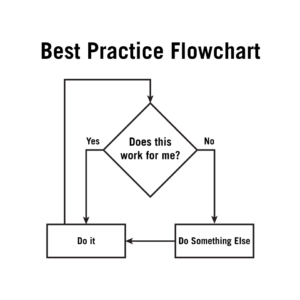The Purposeful Plan
We read a post in Contract Furnishing News (CFN) — “The hype surrounding wellbeing concepts can blind us to their true value” — that made us think about two things: the need for planning and the need for flexibility.
The premise of the post is the way in the media (all of us, in fairness) latch on to particular terms and phrases to the point that we turn those terms and phrases, wittingly or unwittingly, into fads. The offending phrase in the post is digital detox.
It’s a phrase coined by would-be experts who don’t like the fact that we live in an electronically (digitally) connected world and want us to believe we need to disconnect or face perilous consequences. More often than not, the perilous consequences are unspecified. But that doesn’t matter. The point of citing digital detox at all is to make us think we’re doing something wrong, possibly unhealthy, if we remain connected to the world in which we live and work.
To CFN’s credit, the post does offer this balancing commentary:
Everyone needs a break – it’s a natural detox … it doesn’t mean the arguments [in favor of disconnecting] are wrong. We just need to tailor them to different working environments, cultures and team[s]. Put aside the marketing speak … and find out what works for your workplace.
That made us think about two more things: the importance of planning and the importance of balance in planning.
Yeah, But I Thought ….
If you’ve explored our website at all, you know we’re big believers in planning. As the saying goes, if you don’t know where you’re going, any road will get you there. But we’re also believers in the need for balancing certainty with flexibility in planning. It may sound self-contradicting to say you have to plan for the unexpected. Maybe it is. At the very least, you have to allow for it.
Here’s what we mean: You want to get from Point A to Point Z. Do you need plan to get there? Yes. Are you certain Point Z, however you’ve defined it, will remain exactly the same as you cover Points A through Y? No. Make the plan. Take the first step. Stop. Breathe. Look around. Think. If Step B looks exactly as you imagined it would, take it. If it doesn’t, allow for the change, amend the plan, then take the next step. Repeat the process until you reach your desired outcome.
Given that, it may also sound self-contradicting to say we don’t believe in best practices. We don’t. And we don’t because the only way to judge anything best, that judgment can only be in hindsight. We’re not terribly interested in what’s been done or what we’ve already done. We’re much more interested in what we will do and in making sure we do it better than we did it the last time. As opposed to best practices, it’s called continuous improvement.
Don’t Forget
As long as your plan contains these two elements — particularly for your property, commercial or residential — it’s likely to be a good one:
- Marketability. You might plan to be where you are forever. But, like any other element of your plan, that could change. Make sure your property retains marketable value.
- Sustainability. You don’t have to be a greenie to know adaptable reuse and frugality make good sense. Don’t spend what you don’t have to.
Whether the plan for your property is for new use, for sale, or for lease, #1 and #2 are equally applicable and important. And don’t forget: You don’t have to think of everything at Point A, as long as you remain open to positive change. That openness, and its corresponding flexibility, will make Points B through Z much more constructive, productive, and enjoyable.
Now that’s a purposeful plan.



Leave a Reply
Want to join the discussion?Feel free to contribute!